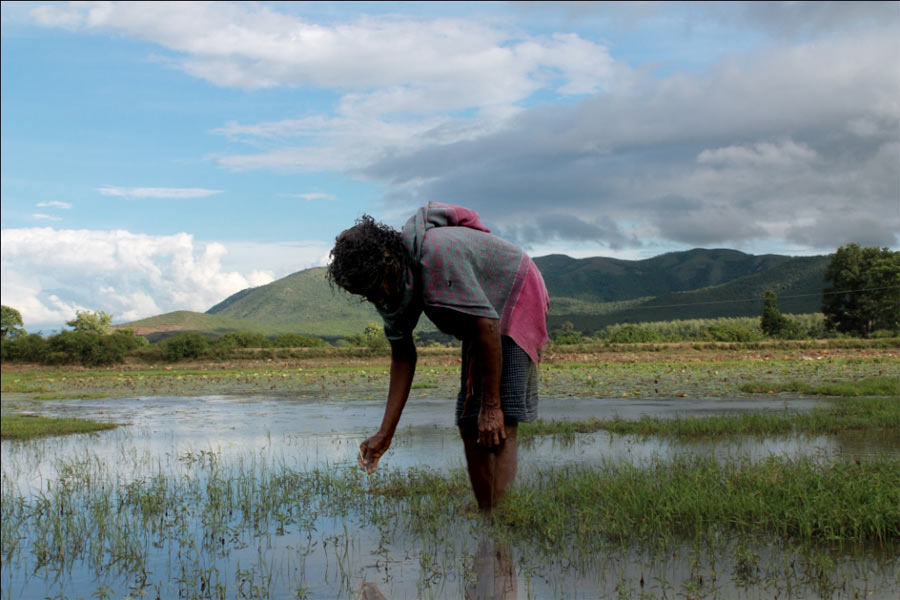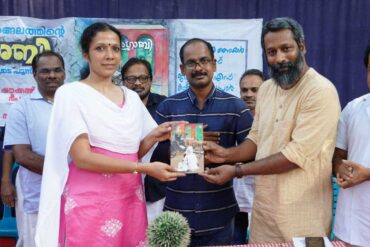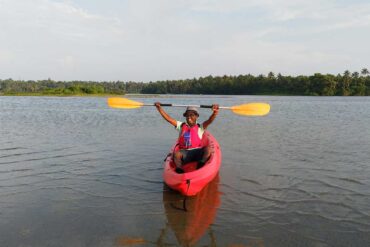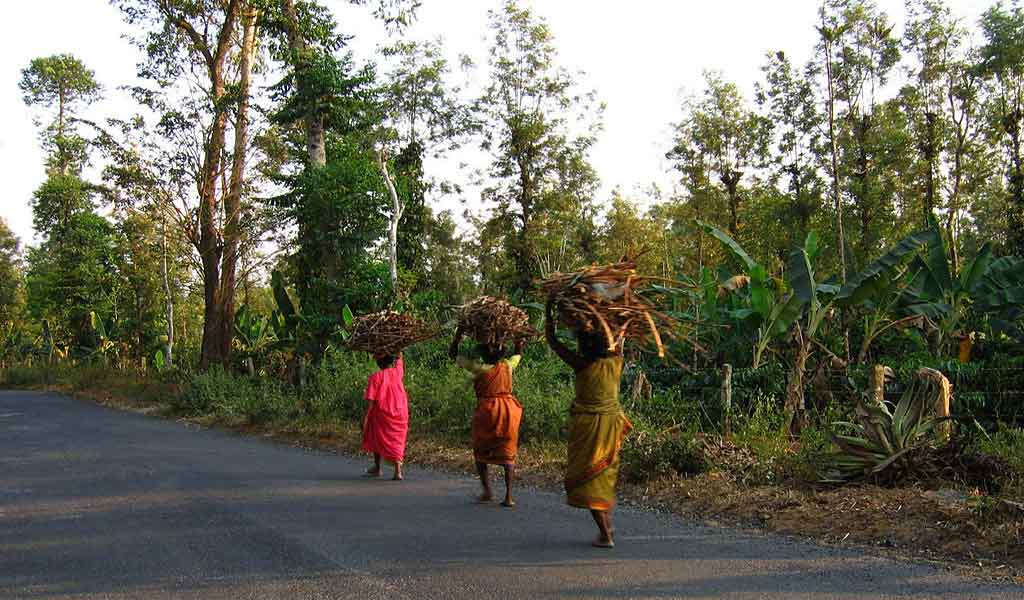The Wayanad district sees the highest number of farmer suicides in Kerala. Every month at least one such tragedy makes it to the pages of the Malayalam dailies. But little is heard about the suicides committed by the indigenous people of the place. This happens right under the collective administrative noses of a purportedly welfare state. These suicides are preventable, if the structural issues leading to these suicides are properly addressed. The template of the fragile ecosystem has been laid out by the Gadgil committee report, yet the human cost of the disaster still remains stuck in newspaper reports.
In the wake of the monsoon floods that occurred in 2018 and 2019, the fragility of the Wayanad ecosystem has been brought to the fore. The continued plunder of natural resources and unbridled construction and development activities are simply not sustainable. The accumulated human cost of such activities, remain to be studied.
Sumant Badami from the Macquarie University in Sydney, Australia has written on ‘Suicide as a counter-narrative in Wayanad’ in which he says that the increase in the number of farmer suicides in Wayanad results from an exceedingly complex set of socio-economic and political factors. He also laments the state apathy and lack of psychiatric interventions, due to “over-politicisation”.
The suicides among the indigenous Paniya community go unnoticed precisely because of the increasing visibility and politicisation of farmer suicides. Their subaltern marginal status render them invisible to the media as well as the state apparatus. This falls under Emile Durkheim’s anomic category of suicides. (This type of suicide is due to certain breakdown of social equilibrium, such as, suicide after bankruptcy or after winning a lottery. In other words, anomic suicide takes place in a situation which has cropped up suddenly.)
The phenomenon of farmer suicides has, so far, only been studied within the matrix of liberalisation and opening up of the economy, which adversely affected the marginal farmers. It’s just not the external factors but internal experiences such as early childhood trauma have to be factored in while studying suicides. The lack of qualified mental health personnel is also impeding efforts to deliver quality care to those among the indigenous, who are affected. The Institute of Mental Health and Neuro Sciences (IMHANS) facility which has been doing sterling work in Kozhikode district, hardly caters to the mental health needs of Wayanad.
The monetary compensation for suicide has rendered those who are often outside the ambit of state protection, such as the indigenous tribes, particularly vulnerable since their cases are not registered by the official apparatus. Once suicides are reported as ‘mental problems’, there are chances of them being disqualified for compensations.
The indigenous ecosystem and its rapid undermining by commercial concerns is what make the traditional indigenous ways of life impossible to inhabit. The utilization of traditional shamanic healing practices is also often cited as an issue. In the traditional healing system, the body-mind dichotomy that is the basis for so much of modern mental health care is not factored in, which rather endorses a holistic cosmic union of mind, body and soul. The lack of coordination between the modern and traditional systems within the indigenous framework is making matters more difficult. There are also chances of the pharmaceutical companies trying to cash in on the mental health crisis. The suicide rate among Paniyas is twice that of other populations in Wayanad. Their traditional lifestyle, family and kinship systems have been radically altered by natural disasters and socio-economic changes.
For instance, the consumption of wild leafy vegetables by the indigenous people of Wayanad has been studied by scientists T Pradeepkumar, V Indira and Mini Sankar, who report that members of the Paniya community consume 71 species of wild plants as leafy vegetables and the Kattunaickan community consume 35 and Kurumas 21 species of wild plants. These wild leafy vegetables form a crucial source of dietary protein and minerals and micro minerals and their deficiency can result in growth retardation in children and developmental deficiency during pregnancy as well as low body mass of the general population. The ecological catastrophe following the floods and the landslides in 2018 and 2019 have seriously impacted the availability and distribution networks of many of these wild leafy vegetables, thereby seriously impeding the nutritional well-being of the indigenous peoples.
Bindu Ramachandran in her ethnographic notes on the Kattunaickens of Wayanad, writes:
“The economic activities of Kattunaickens is a true reflection of their relationship with the eco system. They are engaged in a variety of activities such as gathering for consumption, honey collection, plantation labour, day labour in the fields of landlords as plantation watchmen and as mahouts under the forest department. Food gathering is one of the oldest means of livelihood. They gather wild natural produce like edible fruits, leaves and roots which varies with the season. There are several kinds of edible leaves and greens which are collected and cooked at home. During their wanderings various kinds of berries from the forest are also consumed. Small animals and birds are trapped and consumed.”
The indigenous life has been horribly disrupted by the influx of NRI capital that taps into the resources that have been preserved within the forest ecosystems of Wayanad from time immemorial. The plantation farmers of Wayanad have formed themselves into a major consumer block, aided by the rise in pepper prices in the 1990s (the same is happening with booming cardamom prices at present). Multi-storied supermarkets and textile shops are coming up on a regular basis in the major towns of Wayanad such as Kalpetta and Sultan Bathery. The recent floods and the resulting catastrophe are often part of advertisements for such establishments which offer themselves as balms to salve the wounded psyche of Wayanad via retail therapy. Manathavady and Pulpally have traditionally been more laidback in their developmental approach, owing to historical reasons.
Not only forest produce such as timber, but also cash crops such as cardamom that now fetch enormous amounts of money (over Rs3000 per kilogram) in the global markets are smuggled out using the ghat roads. The alleged presence of Maoist insurgents in the forests has rendered the check posts vulnerable and hence most of them are not manned after nightfall. The fragile ecosystem combined with human greed and lack of political will have rendered the ghat roads (except the Thamarassery ghat road which still receives an inordinate amount of attention and media coverage) vulnerable to the elements.
The civil station in the Wayanad district headquarters, Kalpetta, is laid siege to on almost a daily basis by various groups, including indigenous people from Thovarimala demanding land rights, and seeking social justice solutions for their grievances. Despite the recent national visibility of Wayanad parliamentary constituency owing to the candidacy and subsequent victory of Rahul Gandhi, the impact of the ASEAN trade agreement and its negative impact on the plantation sector of Wayanad have received little attention.

The family and kinship relations and belief systems of the indigenous also impact their economic welfare, as Bindu Ramachandran points out in her work on the Adiyan community in Wayanad. She says that, “In a household where the husband and wife are not in good terms, the husband has to suffer unemployment while his wife is working. Grazing of goats, feeding of animals and keeping poultry are predominantly feminine jobs. Every Adiya household raises small poultry because chicken is required for offering to deities and ancestral spirits. Poultry remain exclusively under the ownership of women. Kitchen gardening, again, like poultry, is exclusively a feminine job.”
The changes in gender relations among the Kuruma community in Wayanad as a result of rapid economic and social changes has been studied by Isabelle Kunze. She suggests that eco-feminism propounded by activists such as Vandana Shiva proposes a natural connection between women and the environment through which the indigenous women can turn into natural caretakers of their environmental resources. The need for new ecological initiatives such as the Chipko movement initiated by Chandiprasad Bhat and Sunderlal Bahuguna, is also urgent and pressing. Gisella Susana Cruz Garcia in her work on The mother–child nexus: Knowledge and valuation of wild food plants in Wayanad, says that “women are the knowledge holders and are the primary means of knowledge transmission to their children. Nevertheless, fewer children (in Wayanad) are collecting wild food plants with mothers and learning about them, apparently because of children’s lack of time.”
What is particularly galling about the official apathy towards the indigenous communities of Wayanad is the manner in which they have been rendered invisible to the official machinery. Suicides and attempted suicides often go unreported. The pathologization of the indigenous groups by the official government machinery is mostly to blame.







